Many of you will have seen e-mails I sent out to members earlier this year saying that Den was planning to run a queen rearing course for our members this season. The course was very popular – so much so that he ran a second one. I was able to attend this, and I feel confident that next year I’ll be able to tackle queen rearing in my own apiary.
This afternoon Den and I drove around West Wiltshire like a pair of rather unlikely fairy bee-mothers, sprinkling mating nucs and queen cells into deserving apiaries. This was the culmination of the second round of queen rearing, from which we were able to take 14 queen cells.
The starter and cell-builder colonies were Den’s own bees in his home apiary. A couple of days ago we collected together the 14 mating nucs we knew we’d need for the queen cells that the cell builder colony had accepted and drawn out. It’s a fairly motley collection – all makes, sizes and colours of mating nuc in this stack!
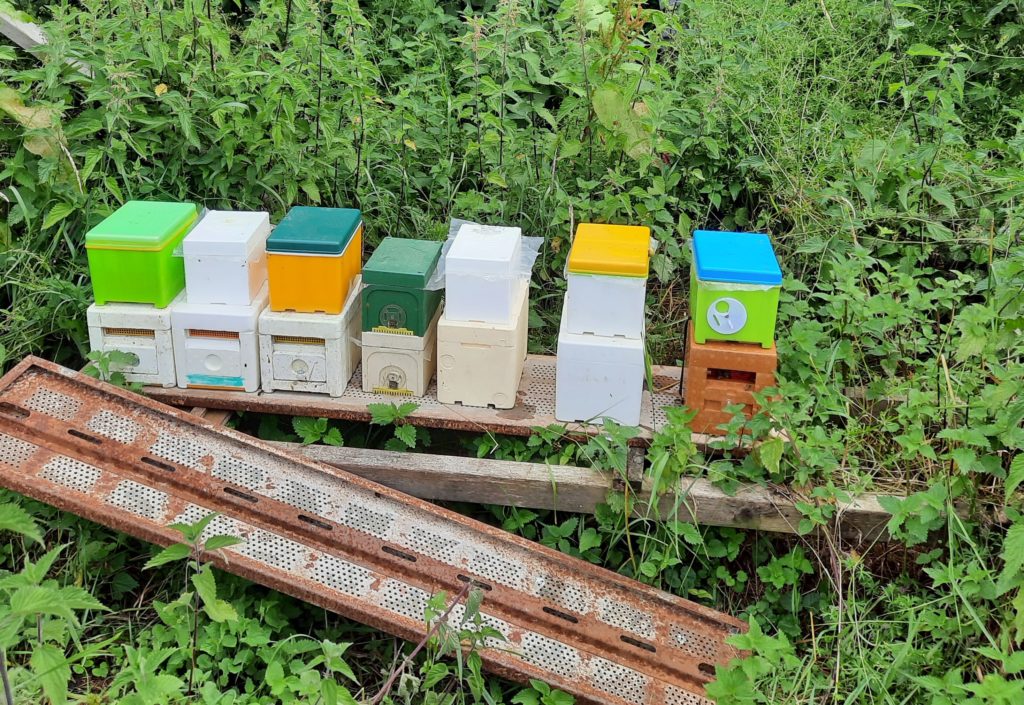
After the mating nucs had been filled with a cupful of bees each and left alone for a couple of days with the entrances closed, it was time for us to transfer the queen cells into them. Den took the cell bar out of the cell-builder colony:
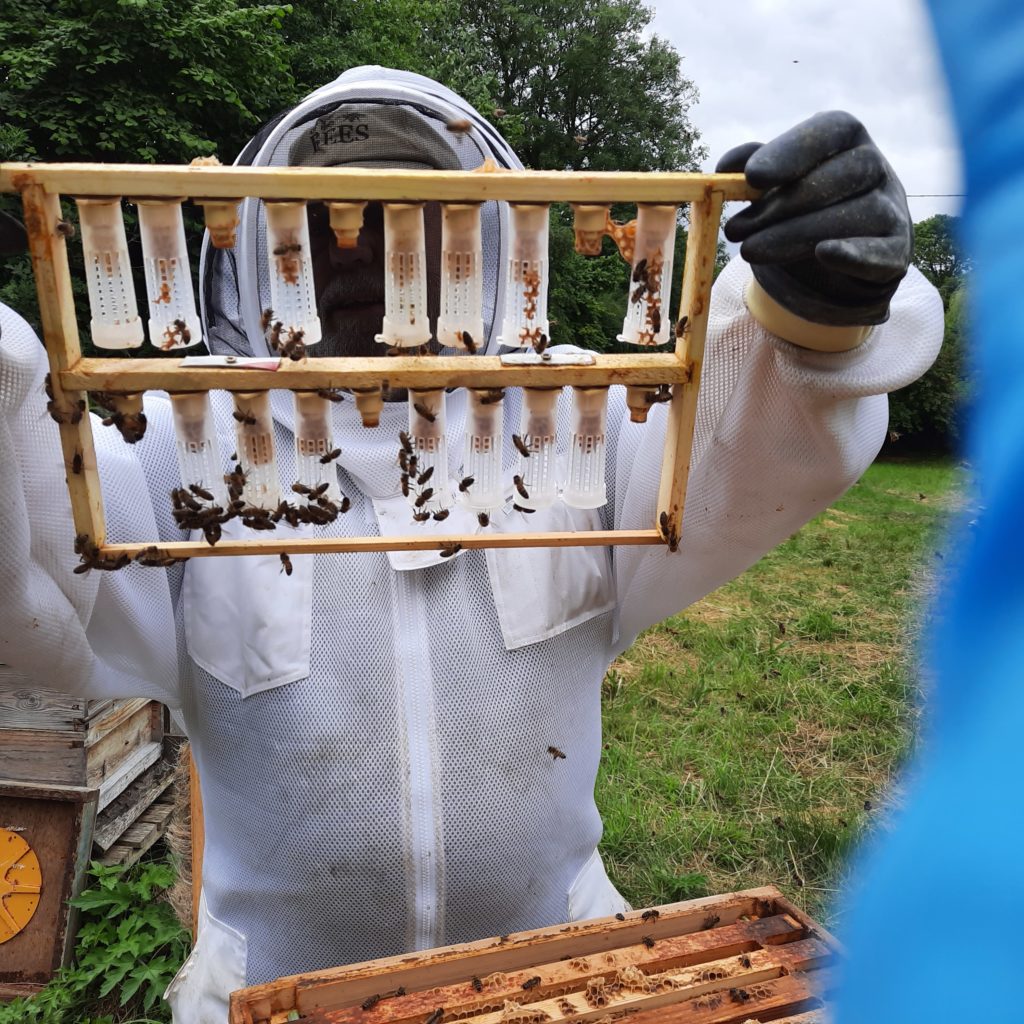
We very carefully removed them from the cell bar, still in their roller cages, and put them into a foam-padded case ready for their journey to their new apiary sites:
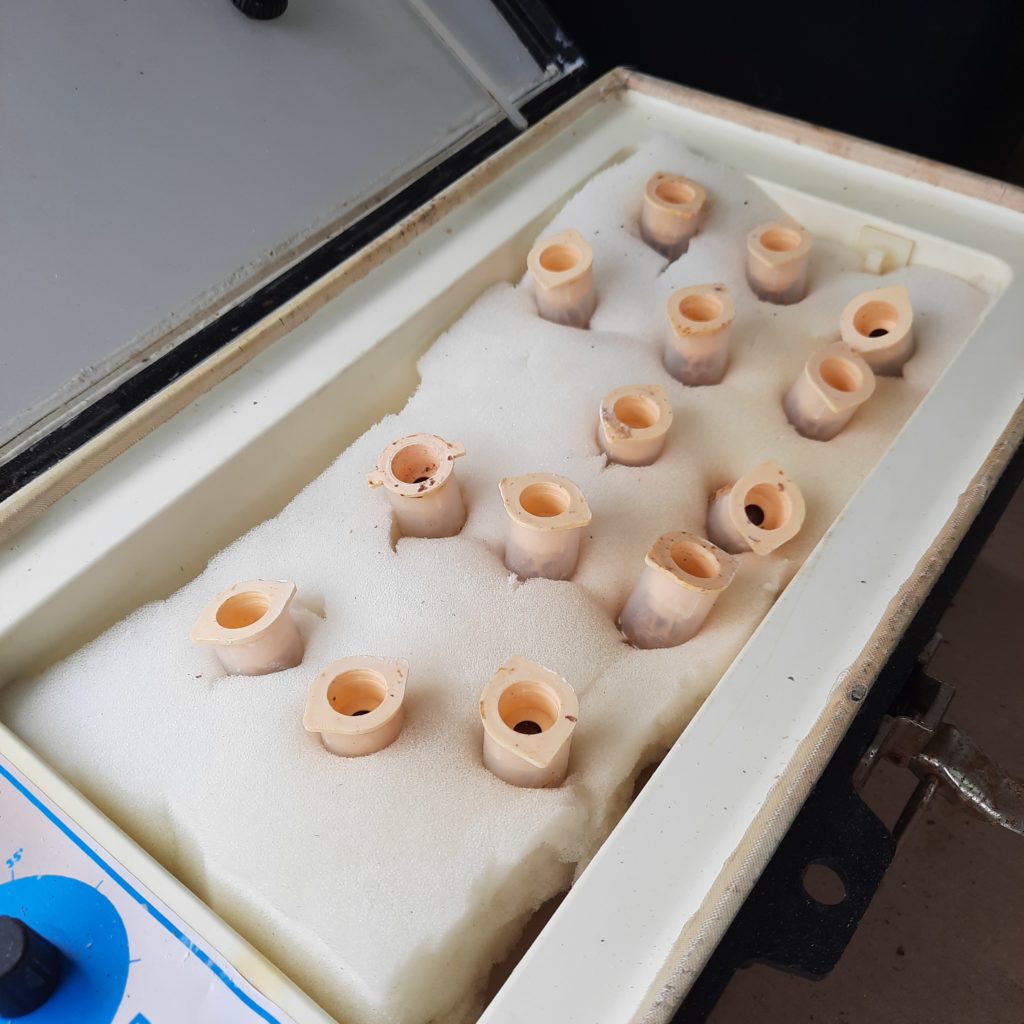
Then we put all the mating nucs into the boot of Den’s car. It was quite buzzy!
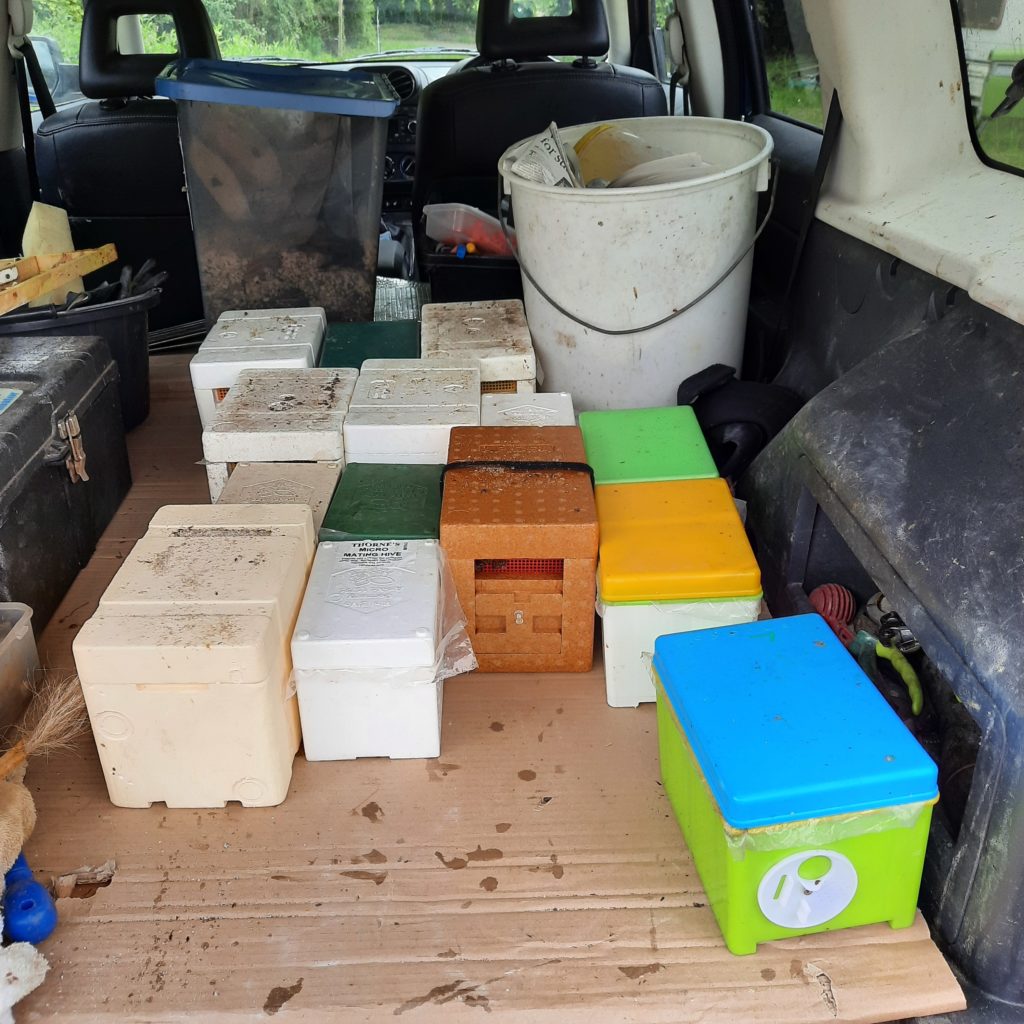
We then drove around the countryside, stopping off here and there to distribute mating nucs and queen cells. At each apiary we opened up the lid of a nuc, removed the roller cage from a queen cell, and put the queen cell into the mating nuc before opening the entrance and letting the bees out. This nuc is one of 4 that we left at the club apiary. The bees were pretty glad to get out after being confined in a tiny nuc for 3 days!
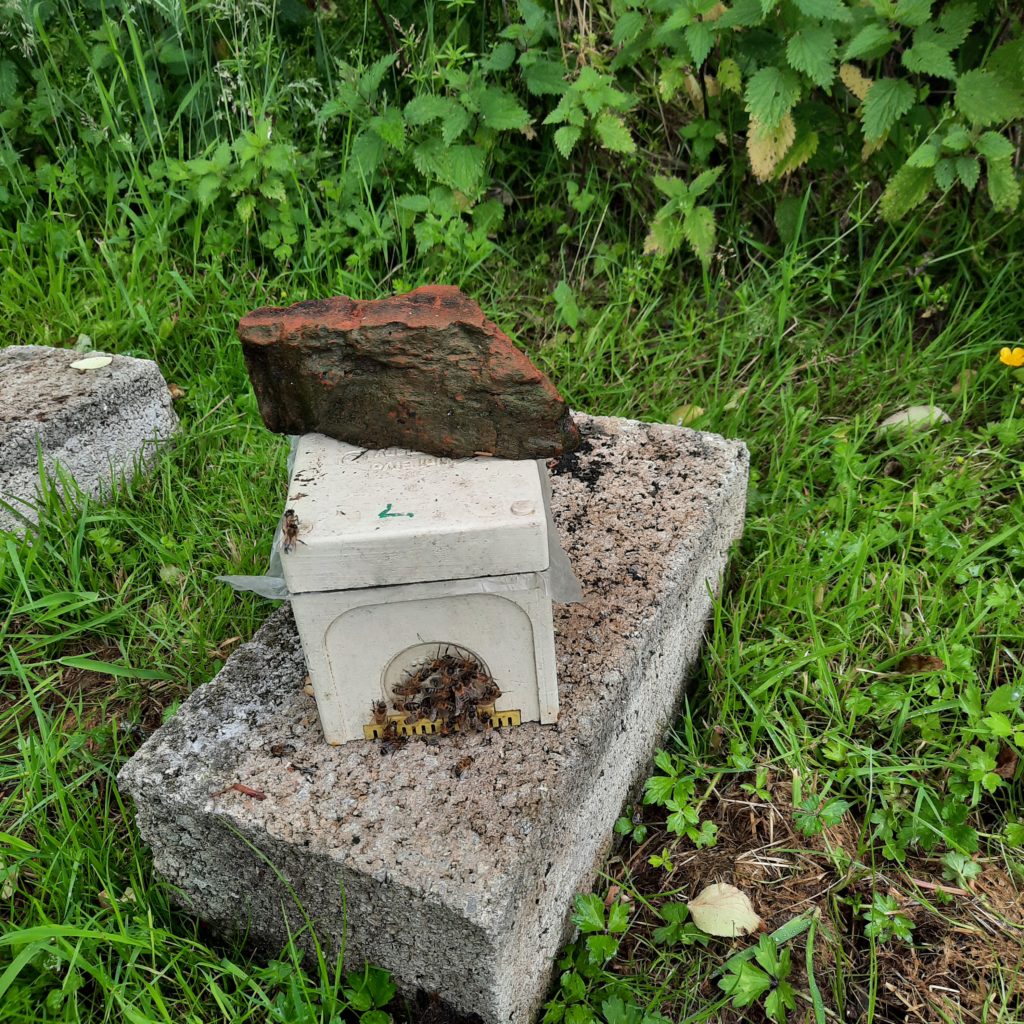
One of the drop-off points was my home apiary, where we put two of the nucs. If all goes to plan, the virgin queens should emerge tomorrow, and mate next week. Fortunately the weather looks like it’s going to improve from tomorrow onwards, which improves the chances of the virgins going on successful mating flights. The challenge for me will be to leave the nucs in peace for 3 weeks, and not disturb the bees. Let’s hope we end up with a high percentage of well-mated queens ready to build strong new colonies.
